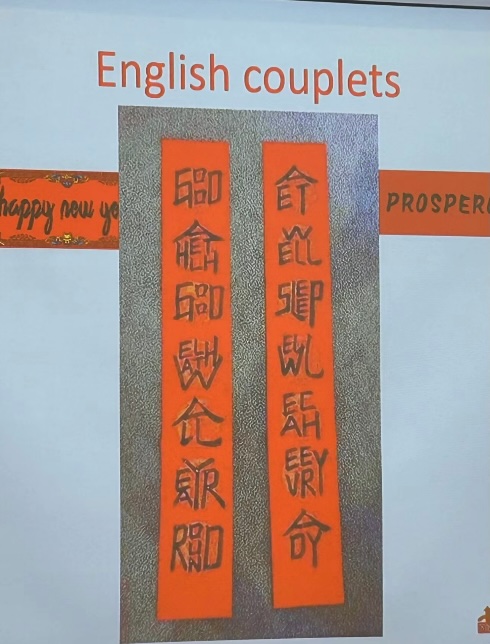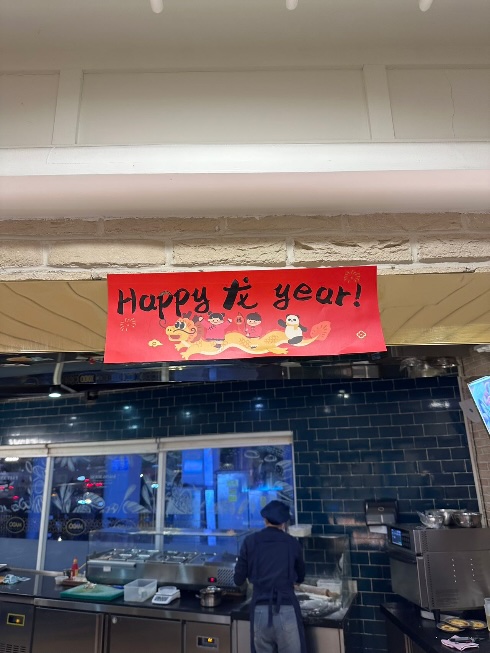Lunar New Year's greetings, part 2
« previous post | next post »
You can't really have a traditional Lunar New Year's celebration without posting spring couplets, as witness here.
In recent years, though, these "spring couplets" (chūnlián 春聯 / 春联) — a special type of "antithetical couplet" (duìlián 對聯 / 对联) — have morphed into all sorts of different forms and formats, such as this set, which we studied back in February 2019 (see "Selected readings" below):
I leave it to you to read for yourself.
And now we even have "couplets" from the American Institute in Taiwan that consist of one line made up of two characters, such as this one:

(source)
and this one:
Happy New Year’s Eve! New Year’s Eve is a time for family members to hang up spring couplets, gather together for dinner, toast on the hard work and achievements throughout the year, give out red envelopes for good luck to come, and to stay awake at night to bring blessings to the elderly members and increase their longevity. AIT writes a spring couplet of 除夕to say goodbye to the year of the rabbit and welcome the new year!
(source)
These two examples respectively say chūyī 初一 ("New Year's Day"; in other contexts it can mean "first day of a lunar month; freshman [in junior high school"]) and chúxì 除夕 ("New Year's Eve").
And here are some miscellaneous specimens:
Selected topolectal pronunciations
龍 / 龙 ("dragon")
- Cantonese
- Gan (Wiktionary): lung4
- Hakka
- Jin (Wiktionary): lung1
- Min Bei (KCR): lê̤ng
- Min Dong (BUC): lṳ̀ng / lèng / liòng→lùng
- Min Nan
- Wu (Wugniu)
- (Shanghainese): 6lon
- Xiang (Changsha, Wiktionary): long2
(source)
Selected readings
- "Lunar New Year's greetings, part 1" (2/16/24)
- "English New Year's couplet" (2/8/19)
- "Happy LÓNG year!" (1/23/12) — this one features an ambigram that boggle your mind and other miscellaneous tours de force dragon year greetings tours de force
[Thanks to shaing tai and Zhaofei Chen]





Loony24 said,
February 17, 2024 @ 5:48 am
Is that an intended irony or American humor for those two AIT gentlemen to hold a brush with no trace of ink on it while at the same time, it seems that the gesture of holding a brush is supposed to mean that the "couplet" (how can it be regarded as a "couplet" at the first place?) is written by him?
Victor Mair said,
February 20, 2024 @ 11:50 pm
From Carl Masthay:
long2 appears in cyrillic as (Dungan, Cyrillic and Wiktionary): лун (lun, I). I have to explain something: In cyrillic there is no single ŋ symbol, and so they chose "н" for Chinese /ng/, avoiding the digraph, but for the regular cyrillic n symbol (not the palatal), they chose "нь" for Chinese /n/. It was a phonetic-equivalency problem for Russian and requires some getting used to. Now my next question: What is the capital I supposed to indicate? It's not a tone mark. Could transliterated "lun, I" be a typing error for /luŋ/?